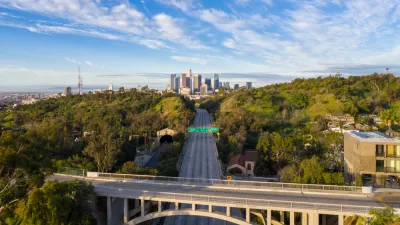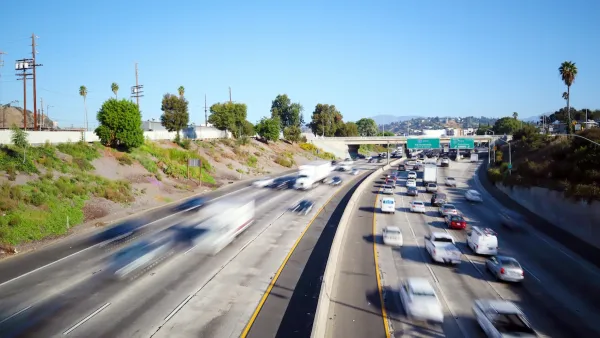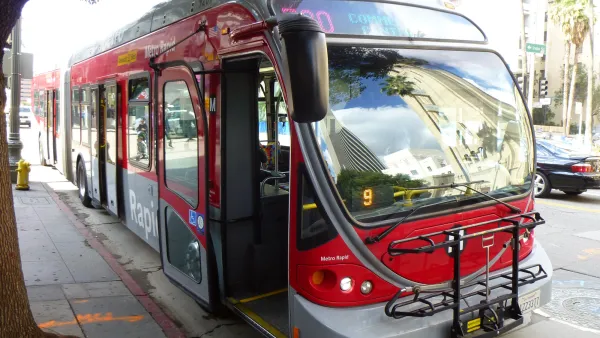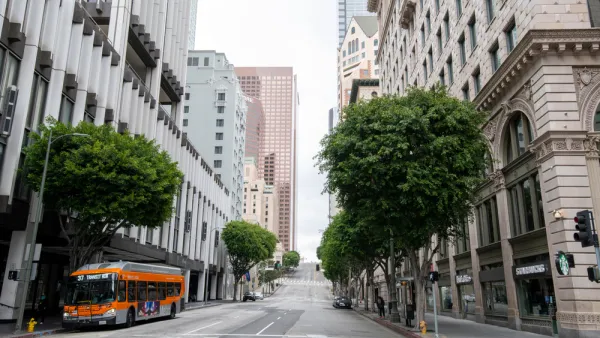The updated language clarifies that projects can include Complete Streets features, items supported by the county's voters through Measure M.

The L.A. County Metro board of supervisors voted on June 24 to approve updates to the county's Highway Program that will allow "for flexibility on future highway-funded projects, many of which are on city streets." Joe Linton reports on the story for Streetsblog Los Angeles, writing, "[t]he Metro Highway Program had blocked complete streets features from being included in projects funded by some Metro sales tax revenue. Now, where appropriate, these projects can include features that support transit, bicycling, and walking."
Despite a voter-approved sales tax measure that "defined 'Highway Construction' as projects on 'public highway and street rights-of-way… includ[ing] Complete Streets, Green Streets, and active transportation improvements such as bikeways and pedestrian improvements,'" the Metro Highway Program's guidelines "did not acknowledge this voter-approved, multimodal direction."
Linton writes that "[t]he short-term effects of the new policy will not be dramatic, but two Long Beach projects that were essentially put on hold by the Gateway Cities Council of Governments can now move forward with Metro funding. Hopefully, in the longer term, Highway Program projects will include more multimodal components, providing the broad range of transportation options that voters approved in Measure M."
FULL STORY: Metro Board Approves Highway Program Modernization

National Parks Layoffs Will Cause Communities to Lose Billions
Thousands of essential park workers were laid off this week, just before the busy spring break season.

Retro-silient?: America’s First “Eco-burb,” The Woodlands Turns 50
A master-planned community north of Houston offers lessons on green infrastructure and resilient design, but falls short of its founder’s lofty affordability and walkability goals.

Delivering for America Plan Will Downgrade Mail Service in at Least 49.5 Percent of Zip Codes
Republican and Democrat lawmakers criticize the plan for its disproportionate negative impact on rural communities.

Test News Post 1
This is a summary

Test News Headline 46
Test for the image on the front page.

Balancing Bombs and Butterflies: How the National Guard Protects a Rare Species
The National Guard at Fort Indiantown Gap uses GIS technology and land management strategies to balance military training with conservation efforts, ensuring the survival of the rare eastern regal fritillary butterfly.
Urban Design for Planners 1: Software Tools
This six-course series explores essential urban design concepts using open source software and equips planners with the tools they need to participate fully in the urban design process.
Planning for Universal Design
Learn the tools for implementing Universal Design in planning regulations.
EMC Planning Group, Inc.
Planetizen
Planetizen
Mpact (formerly Rail~Volution)
Great Falls Development Authority, Inc.
HUDs Office of Policy Development and Research
NYU Wagner Graduate School of Public Service





























